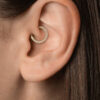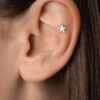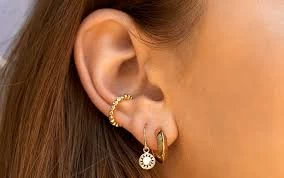Introduction
A daith piercing goes through the innermost cartilage fold of the ear. It’s becoming popular for its supposed migraine and headache relief. However, there is no scientific evidence to support this claim. We’ll discuss the procedure, healing process and potential risks of a daith piercing in this article.
Procedure
The daith piercing procedure is similar to other types of cartilage piercings. The piercer will use a hollow needle to create a hole in the cartilage of the ear, and then insert a piece of jewelry, typically a ring or a hoop. The piercer will then clean the area and provide you with aftercare instructions. The procedure is usually quick and relatively painless, though some people may experience some pain or discomfort.
Healing Process
The healing process for a daith piercing can take several months, and it is important to take proper care of the area to prevent infection or other complications. You should clean the area with saline solution or a mild soap and water, and avoid touching the piercing or exposing it to dirty environments. It is also important to avoid sleeping on the side of the pierced ear and avoid exposing the piercing to water for the first few weeks after getting it done.
Potential Risks
A daith piercing has potential risks. These include infection, bleeding, and allergic reactions to the metal. The piercing may reject or migrate, which means the jewelry is pushed out or moves to another location. Keloid scarring, a raised scar, may occur around the piercing.
Conclusion
Adorn your ear in a unique and stylish way with a daith piercing. However, be aware that it may not have any proven benefits for migraines or headaches and that not everyone’s body will heal the same way. Research the procedure, aftercare, and potential risks before getting your daith pierced. Seek the advice of a professional piercer to make an informed decision and receive proper aftercare instructions.





























